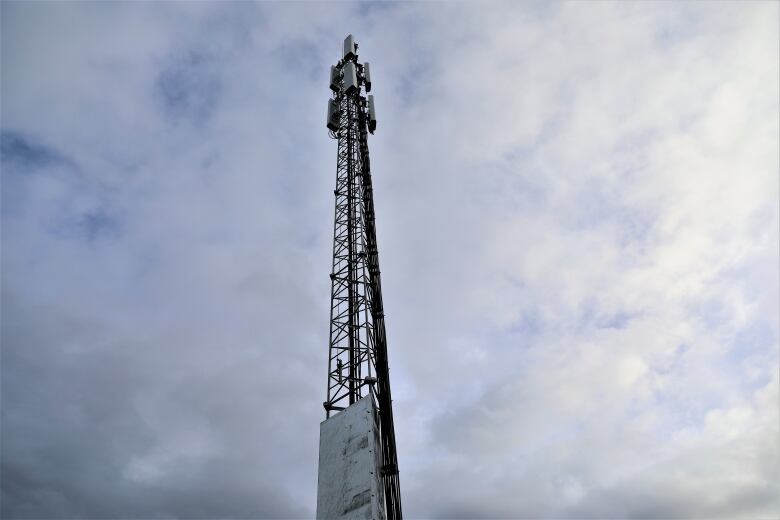Life changes instantly as cell service switched on in Ahousaht

Classes done for the day, students stream out of Ahousaht’s high school and onto the sidewalk.
Like their counterparts across the country, many of the teens immediately bury their faces in their cellphones.
But in this Indigenous community of 900 on an isolated island off the rugged west coast of B.C., it’s a brand new experience because the service was activated on Dec. 1.
“I was happy I could send text messages and not use my Wi-Fi,” one of the students, Corby Frank, said two days later.
Jeremy Sam noticed a change right away in other students’ behaviour.
“It’s different,” he said. “Everyone is on their phone more.”
New challenge for teachers
Teacher Ethan Wills now finds himself in the same boat as most Canadian educators.
“When the switch was flicked, you could tell the kids were a little more distracted and a little less attentive to me.”
But Wills said there is an upside.
“Ultimately I think it will be a major benefit,” he said. “More information coming, more information readily available, is a good thing. We just have to figure out how to navigate around it.”
Ahousaht’s Deputy Chief Melinda Swan said people across the community were excited when the cell coverage was activated after several years of lobbying for service.
“We’re an isolated community, and some people are caught in situations where they need help and a cellphone would help them in our area,” she said. The flood of summer tourists, as well as locals, will benefit, she said.

Faster help for medical needs
Ahousaht resident Gino John said it’s now suddenly much easier to arrange medical care for his child who has developmental issues that require frequent medical care.
“I have no landline, and having this benefits being able to email his doctors,” he said, holding his child’s hand by the side of the gravel road that runs through the community.
But Ahousaht hasn’t been entirely off the grid. Years before cell service, VHF radios ruled, and continue to be a significant mode of communication.
Residents communicate on a specific channel, where a listener can hear people asking about boat rides to Tofino, or even someone selling fresh baked cupcakes and turnovers.

The two-way radios are in almost every home, in vehicles and many people carry portables as they venture out.
One man walking down the road pointed to his radio saying someone was just talking about a wild animal on the loose.
“There’s a cougar wandering around, a cougar!” he exclaimed before continuing his walk.
But cell service means the radios will be used less.
On a tour of the harbour on a boat used for search and rescue, emergency co-ordinator Alec Dick said the new cell service should help keep people safe on the ocean.
“Your highway is a paved highway. Ours is a water highway,” he said, explaining how people here jump in a boat like people in the city use their cars.
But the local waters with rocky islets and open Pacific Ocean to the west are sometimes dangerous.

Search and rescue benefits
The community jumped into action in 2015 when a whale watching boat, the Leviathan II, sank. Six people died, but Ahousaht rescuers saved 21 others.
Cell service wasn’t available, causing co-ordination problems with authorities in Tofino, where the hospital and other emergency services are based.
“It’ll make it quicker to communicate with the people we need to communicate with,” said Dick, who is pleased it adds another layer of protection for people in the community and on the water.
The tower was put up by Telus at a cost of about $500,000, part of an ongoing program to help connect 178 Indigenous communities across the sprawling province.

Expensive to build cell towers
About 90 per cent of the Indigenous communities in B.C. now have cell service, but the expense of building towers means isolated areas with small numbers of people still lack coverage.
A Telus executive said millions of dollars have already been invested, but it’s expensive to service long stretches of lightly travelled highways that would generate little additional revenue for phone companies.
“Getting from community to community you’ll see some of the highways still have gaps in terms of connectivity, and we’re working on that,” said vice-president of consumer health Juggy Sihota. “We’re looking at government on how we can work together to close those gaps.”
Back in Ahousaht, people are quickly getting used to the new service.
“I’m just going to text my mom,” said Xavier Smith, who wants to tell her he’s been interviewed by CBC.
And to prove it he takes a selfie with the visiting news crew on his phone and sends it off to her.





